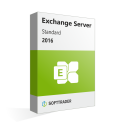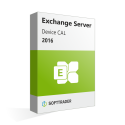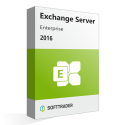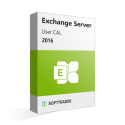What is Microsoft Exchange Server 2016?
Microsoft Exchange Server 2016 serves as a comprehensive platform for business-oriented tasks like mailing, scheduling and collaborating. Developed to run on Windows Server, it offers users the ability to interact with the platform via desktop, mobile phones and tablets. Just like Windows Server products, Exchange Server 2016 requires Client Access Licenses (CALs), depending on your organization structure and needs you can opt for User or Device CALs.
Exchange Server 2016 Enterprise or Standard?
Exchange Server 2016 Standard and Enterprise offer different feature sets to cater the different organizational needs. The biggest difference is the scalability and high-availability capabilities. Exchange Server 2016 Standard is more suitable for small to medium-sized businesses, supporting up to five mailbox databases per server. Exchange Server 2016 is designed for larger enterprises with higher mailbox database requirements, offering support for up to 100 mailbox databases per server.. Exchange Server 2016 Enterprise is primarily intended for organizations that want to utilize Database Availability Groups (DAGs) for high availability. The Exchange servers of a DAG can host copies of the mailbox databases of the other Mailbox servers in this group in addition to their own mailbox databases. Thus, these provide automatic recovery of the mailbox database when, for example, a disk, network or server failure occurs.
When will support for Microsoft Exchange Server 2016 end?
Make sure you purchase a version of Exchange Server that receives adequate support from Microsoft. This includes standard support (updates) and extended support (security). Basic support, i.e. standard support, ends first. See the end support dates below:
Standard support: expired
Extended support: expired
Exchange Server 2016 Client Access Licenses (CALs):
The abbreviation CAL means "Client Access License" and describes a license that allows the client (the business owner) to provide access to Microsoft Exchange Server licenses such as 2013, 2016 or 2019 to devices or users within the company. To do this, the customer has a choice of three different options:
- Exchange Server 2016 User CALs
An Exchange Server 2016 User CAL is a purchase made for each distinct user accessing services via Exchange Server 2016. For example, if one of your employees needs access to the features of Exchange Server 2016 through different devices/devices, that user needs a User CAL license. This can be purchased in addition to the Server license. A User CAL proves especially beneficial if the amount of users is fewer than that of devices.
- Exchange Server 2016 Device CALs
An Exchange Server 2016 Device CAL license facilitates device accessibility to the Exchange Server 2016. This is particularly beneficial for individuals wishing to operate the server exclusively on a single device, or in instances where there are fewer devices compared to users requiring server access. Softtrader assures you that purchasing pre-owned Microsoft licenses is not only safe and practical but also a cost-effective alternative.
Connect to Exchange Server 2016 remotely
To access Exchange Server 2016 remotely, it’s required to purchase a Remote Desktop Services (RDS) User/Device CAL license. The remote licensing of Exchange Server 2016 applies the same rules as for the local access of Exchange Server 2016. A requirement of using Exchange Server 2016 remotely is purchasing either RDS User CALs or RDS Device CALs next to the standard User/Device CALs. You can decide which of these two options would be most financially beneficial depending on the amount of users and devices. If there are more users than devices, purchasing Device CALs would be a financially better decision. If there are more devices than users, User CALs are the cheaper option.
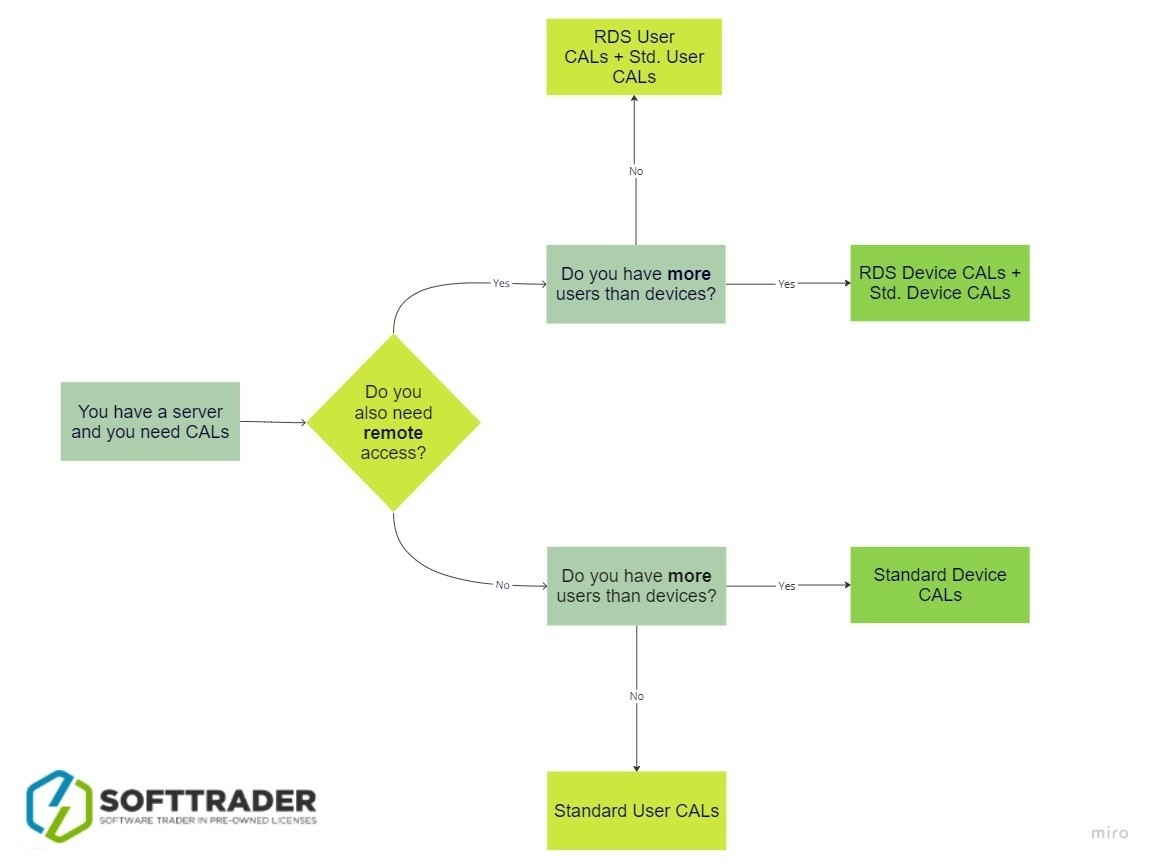
Please note that CAL licenses are NOT included with Microsoft Exchange Server 2016 Enterprise or Standard licenses and must be purchased separately.

